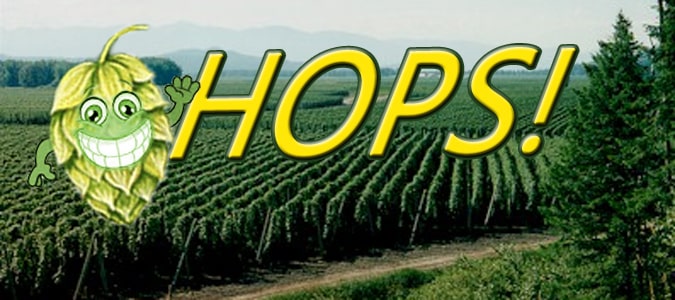
One of beer’s four main ingredients, hops play a hugely important role in today’s craft beer world, yet for many they remain a mystery.
And with this year’s hop harvest now wrapping up, we’ve four fascinating hop factoids guaranteed to make you a beer genius!
Top 10 US Hop Varieties 2019
Hops are the flowers, or cones, of a climbing plant called Hamulus lupulus. They’re a key component of a beer’s smell and flavor…its “hoppy” aroma, flavor, and bitterness.
And as Beer Today explains “a single hop varies widely from year to year, farm to farm, depending on terroir, weather, and conditions.”
Still craft brewers strive to produce flavorful beers that are as consistent as possible. Stone Brewing wants its IPA’s taste to remain constant from year to year. And brewers tend to use hops that consistently deliver on that promise.
The Brewers Association undertakes an annual hop usage survey to help growers make important planting decisions. And according to The Boulder, Colorado-based trade organization, these are the most widely used hops in the US.
- Centennial
- Cascade
- Citra
- Mosaic
- Simcoe
- Chinook
- Amarillo
- El Dorado
- CTZ
- Azacca
Hops Weren’t Always One of Beer’s Four Core Ingredient
As most beer fans probably know, beer is primarily the product of four core ingredients; hops, grain, yeast, and water. But hops weren’t always part of the menu.
Yes it’s true. While people have been brewing for eons, the introduction of wild hops into the mix is relatively new. And they were first added as a preservative not for their bitter flavor or aroma.
Men’s Journal reports that “the earliest recorded use of wild hops in beer was in 822, but organized hop cultivation didn’t begin in earnest until the 1100s in modern day Germany,”
Hops Can Grow To Almost 20 Feet in Height
If you ever visit a hop farm at its peak you’ll confronted with walls of plant trellises that soar to the sky and lush shadowy crop canyons you can hike through.
In fact hops grow so tall (18 -20 ft.) And many hop farms have to build their own specially designed harvest equipment just to be able to get to them. Harvesting vehicles are scrutinized and rejiggered every winter to ensure that they don’t break down during harvest season.
You see the US hop harvest is a critically short period (mid-August and September in the Northern hemisphere) and an equipment breakdown during that small window of time could endanger the whole year’s efforts.
Hops Aren’t Vines. They’re Bines
Hop plants are incessant climbers which take to these towering trellises enthusiastically, but they’re not vines – technically hops are bines.
Vines are plants that climb upward by sending off tendrils or suckers for support. Bine weave their way upward, growing clockwise around the trellis. Tiny downward bristles also help to support the plants as they spiral upward following the sun’s movement from sunup to sundown.
Want more on hops?
 American Craft Beer The Best Craft Beer, Breweries, Bars, Brewpubs, Beer Stores, And Restaurants Serving Serious Beer.
American Craft Beer The Best Craft Beer, Breweries, Bars, Brewpubs, Beer Stores, And Restaurants Serving Serious Beer.
